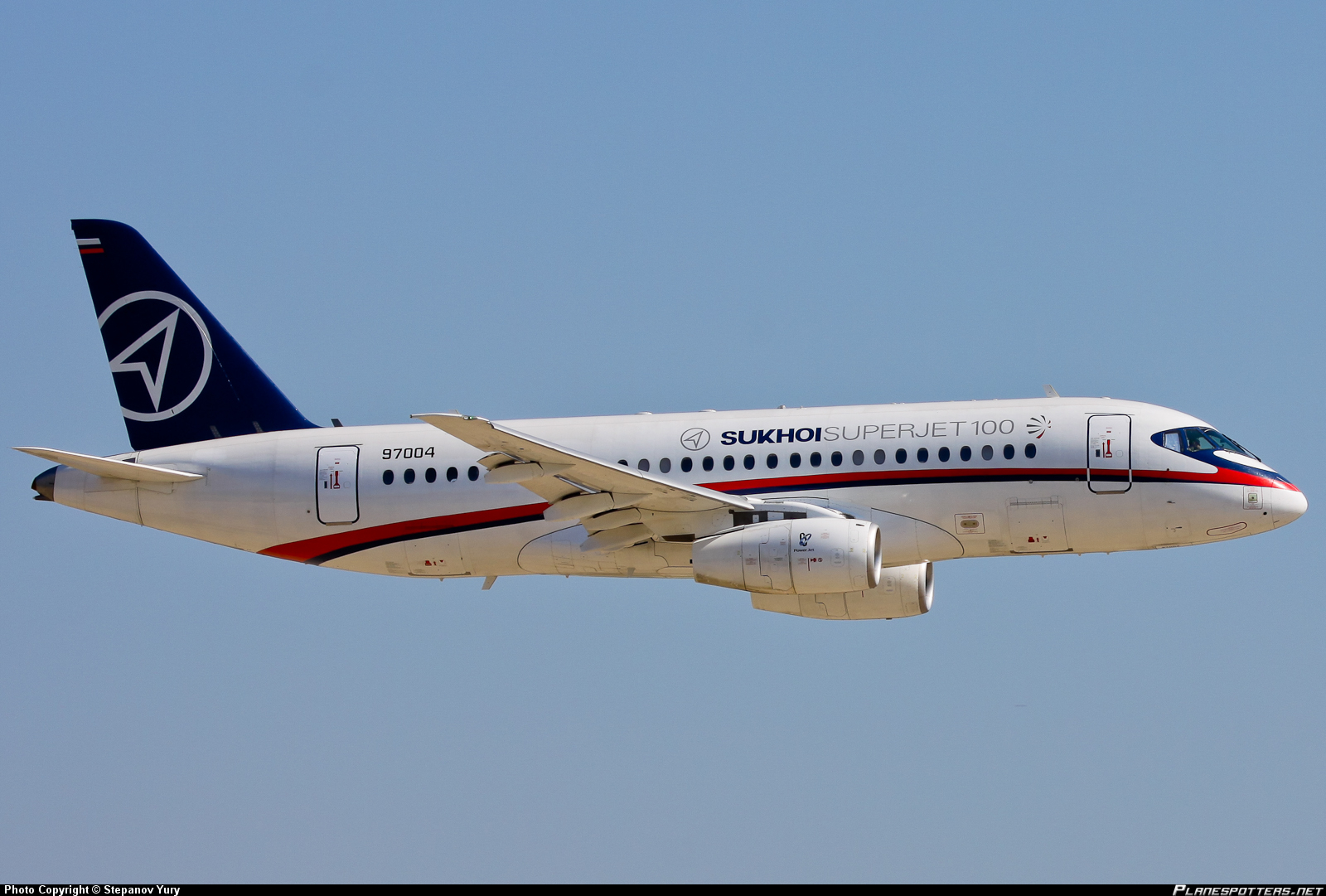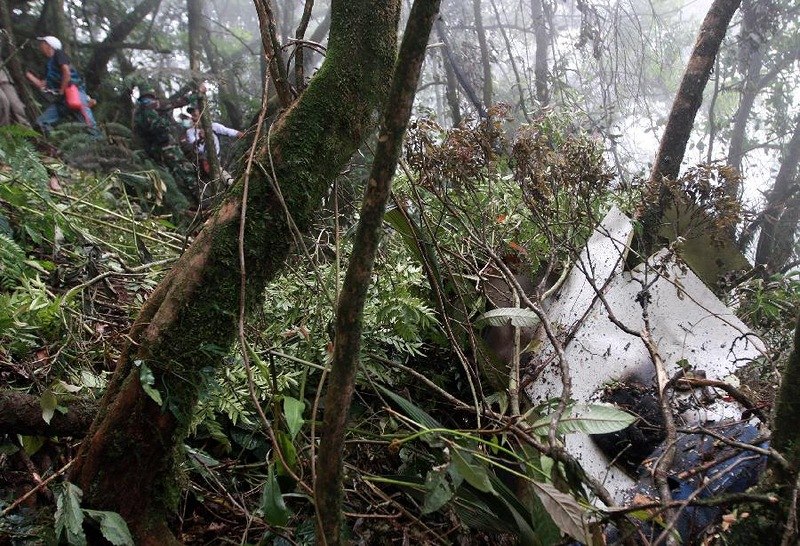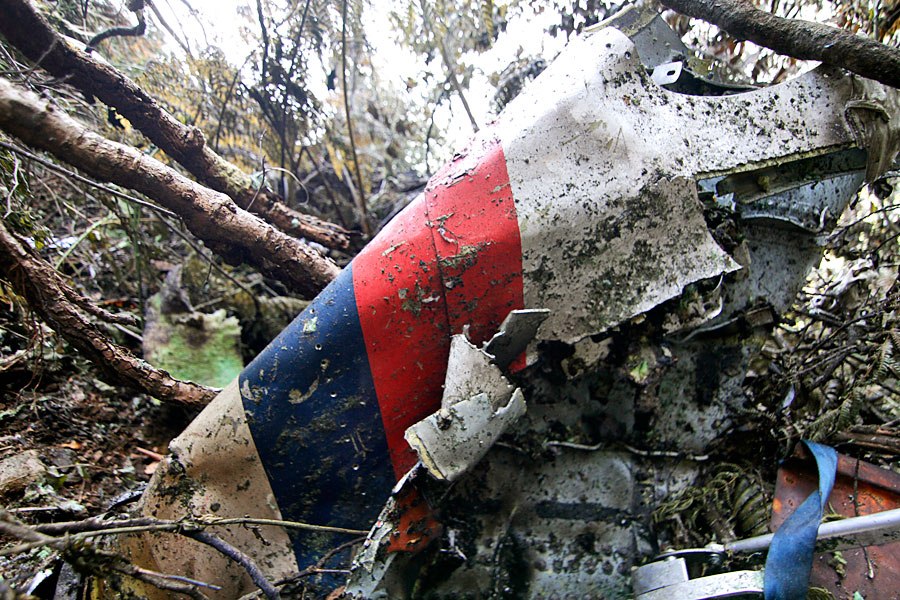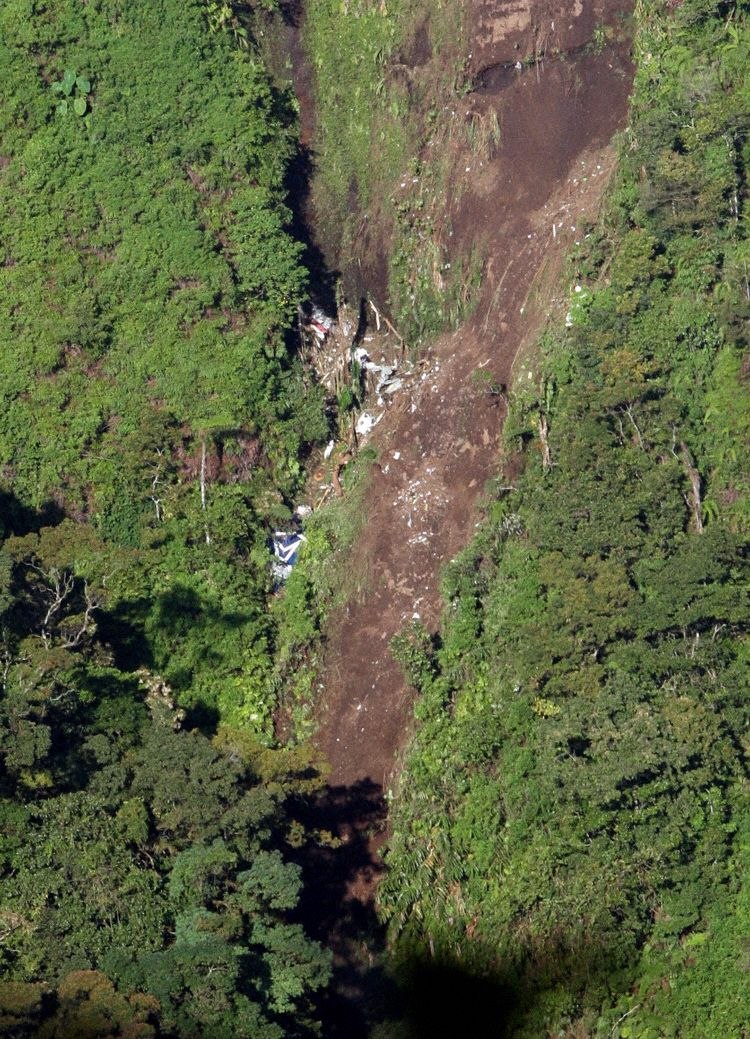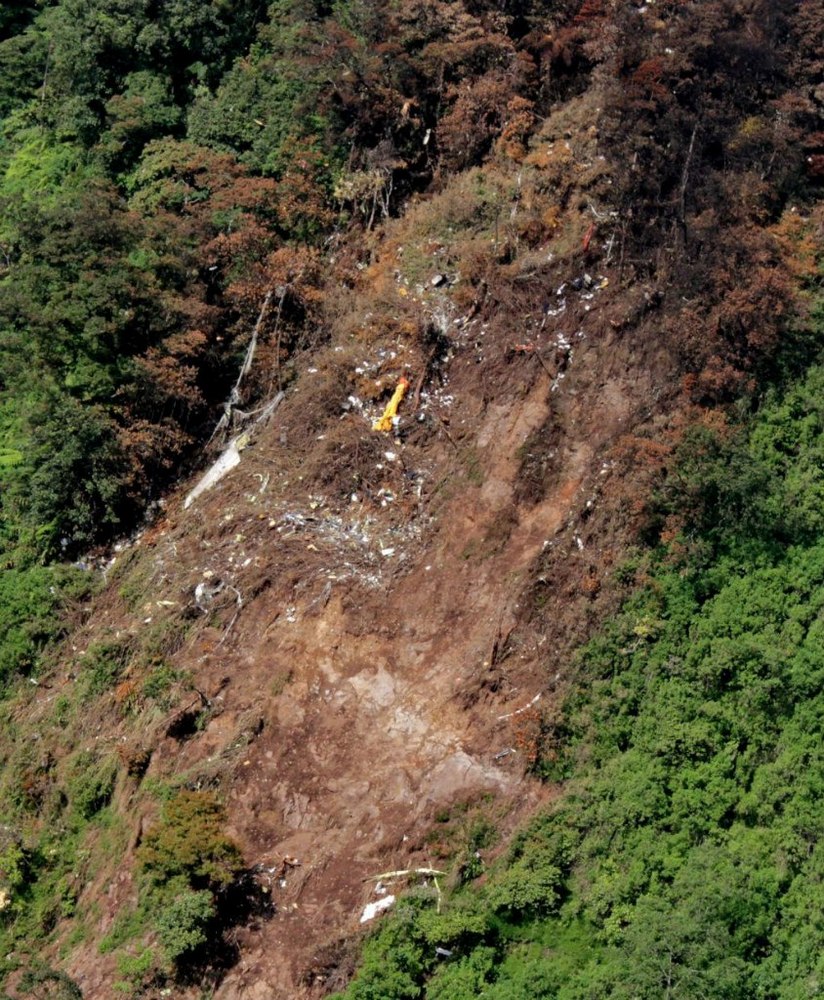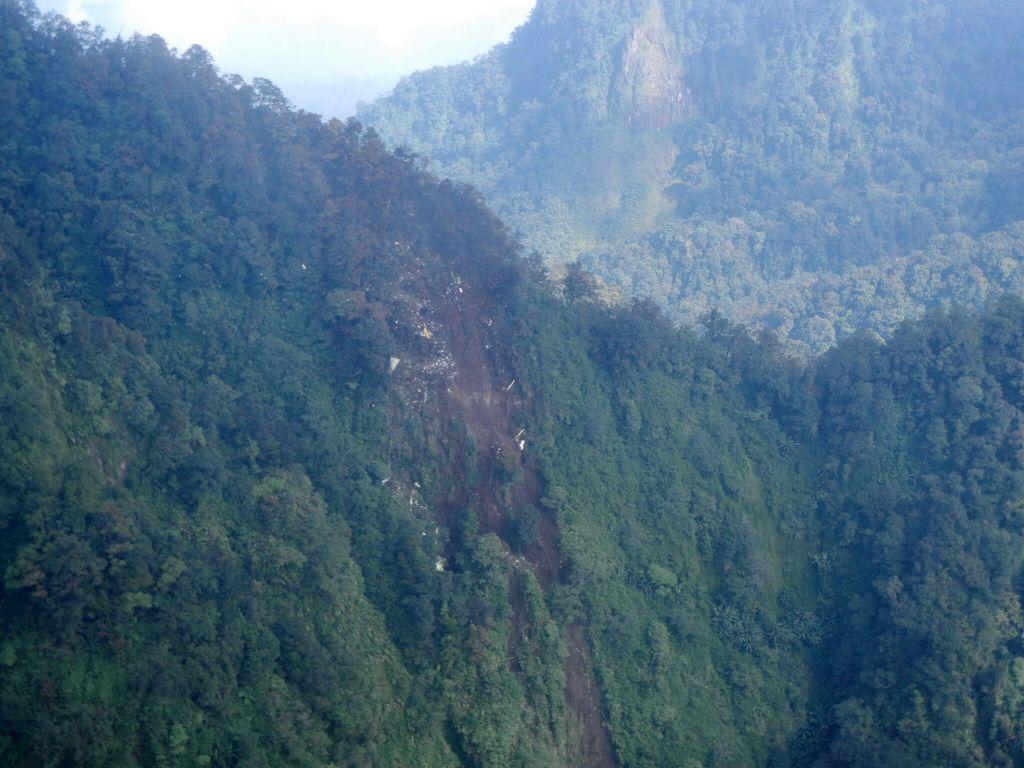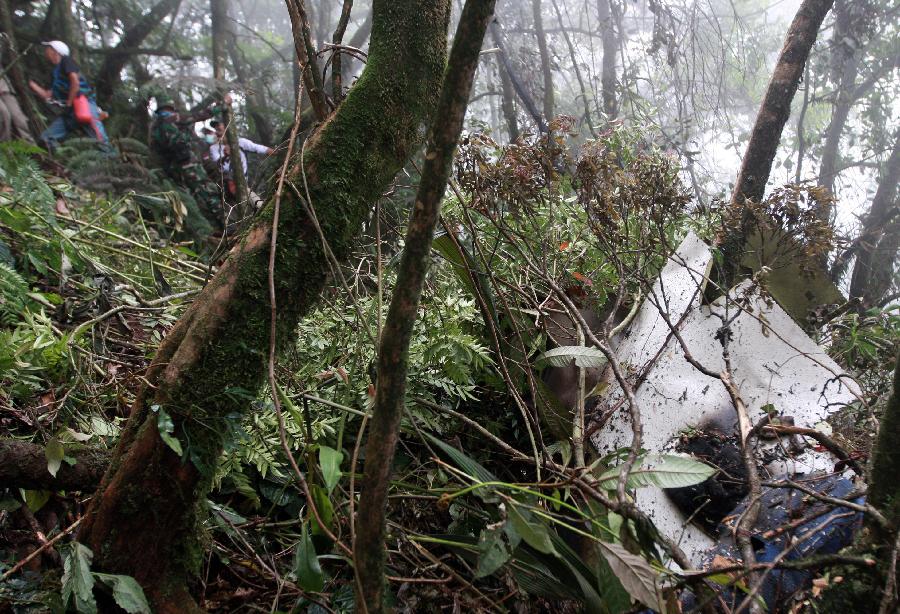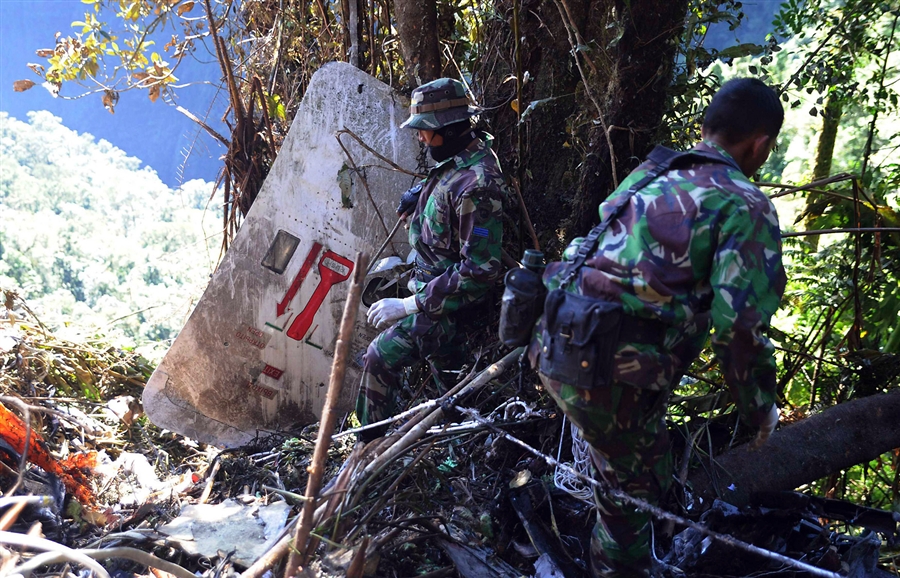Country
Crash of a Sukhoi Superjet 100-95B in Moscow: 41 killed
Date & Time:
May 5, 2019 at 1830 LT
Registration:
RA-89098
Survivors:
Yes
Schedule:
Moscow - Murmansk
MSN:
95135
YOM:
2017
Flight number:
SU1492
Crew on board:
5
Crew fatalities:
Pax on board:
73
Pax fatalities:
Other fatalities:
Total fatalities:
41
Captain / Total hours on type:
1570.00
Copilot / Total hours on type:
615
Aircraft flight hours:
2710
Aircraft flight cycles:
1658
Circumstances:
The aircraft departed runway 24C at Moscow-Sheremetyevo Airport at 1803LT on a schedule service to Murmansk. Few minutes after takeoff, while climbing to an altitude of 10,000 feet, the crew encountered problems with the electrical system and informed ATC about an emergency situation via the transponder codes 7700 because communication systems were unserviceable. The crew initiated a circuit to return to the airport, continued the approach to runway 24L. On approach at an altitude between 900 and 1,100 feet, the windshear warning system sounded five times 'Go around. Windshear ahead'. From a height of 80 m (260 ft) above ground level, the aircraft descended below the glide path and at a height of 55 m (180 ft) the TAWS warning sounded: "Glide Slope." From that moment on the airspeed increased to 170 knots. At 18:30 the aircraft overflew the runway threshold and touched down at a distance of 900 m past the threshold at a speed of 158 knots. Touchdown occurred at a g-force of at least 2.55g with a subsequent bounce to a height of about 2 m. After two seconds the aircraft landed again on the nose landing gear with a vertical load 5.85g, and bounced to a height of 6 m. The third landing of the aircraft occurred at a speed of 140 knots with a vertical overload of at least 5g. This caused a rupture of the wing structure and fuel lines. The aircraft caught fire, went out of control, veered off runway to the right and came to rest in a grassy area, bursting into flames. The aircraft was destroyed by fire. 37 occupants were evacuated while 41 people, among them a crew member, were killed.
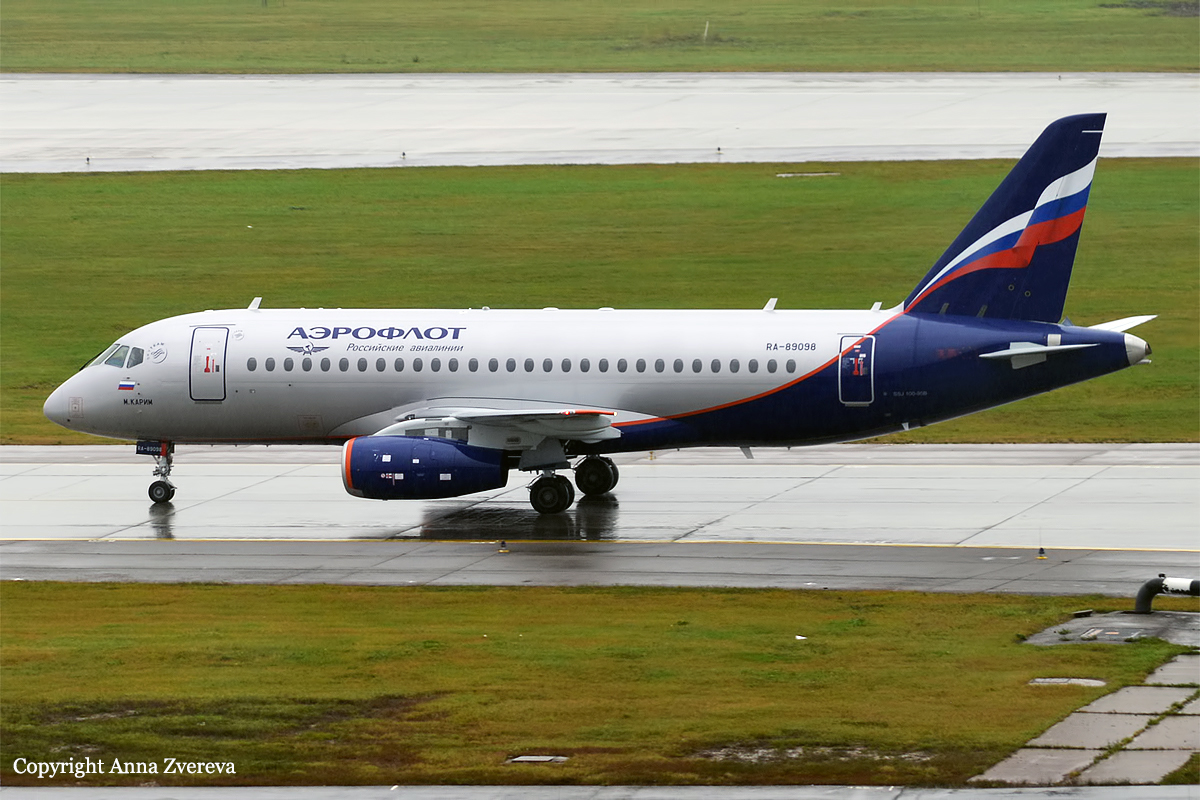
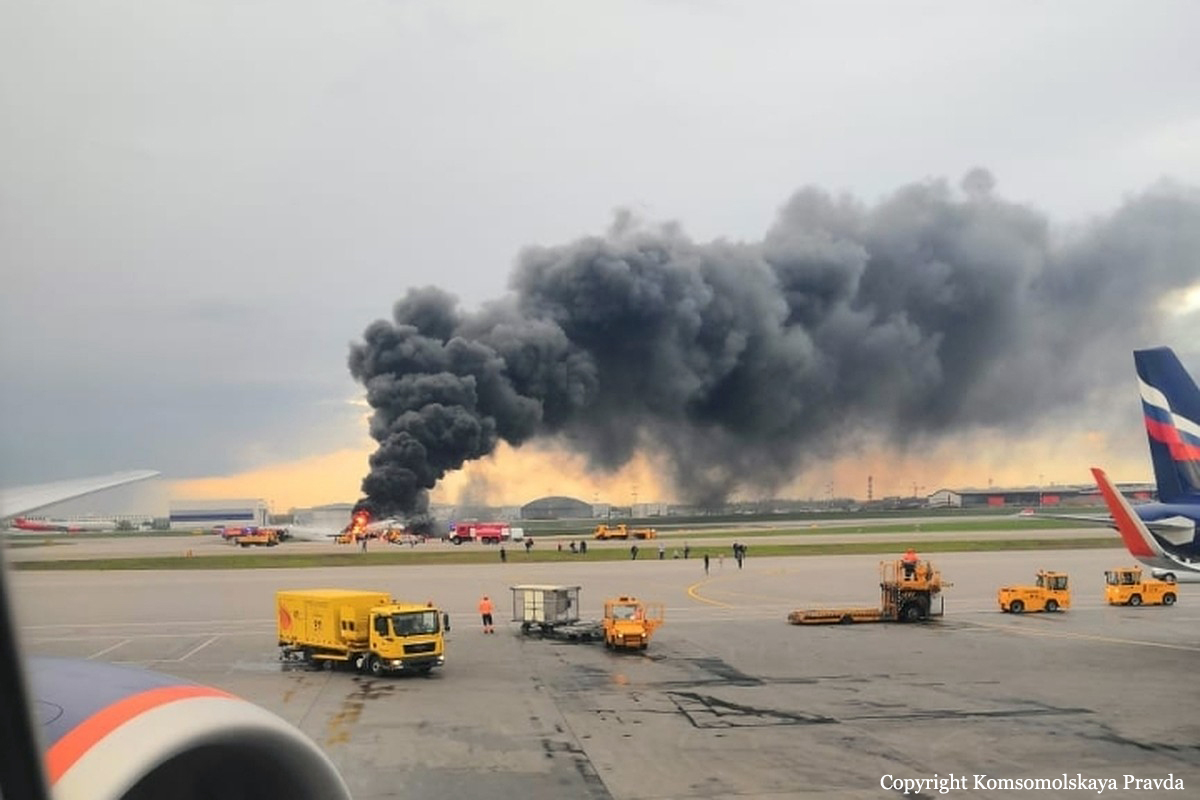
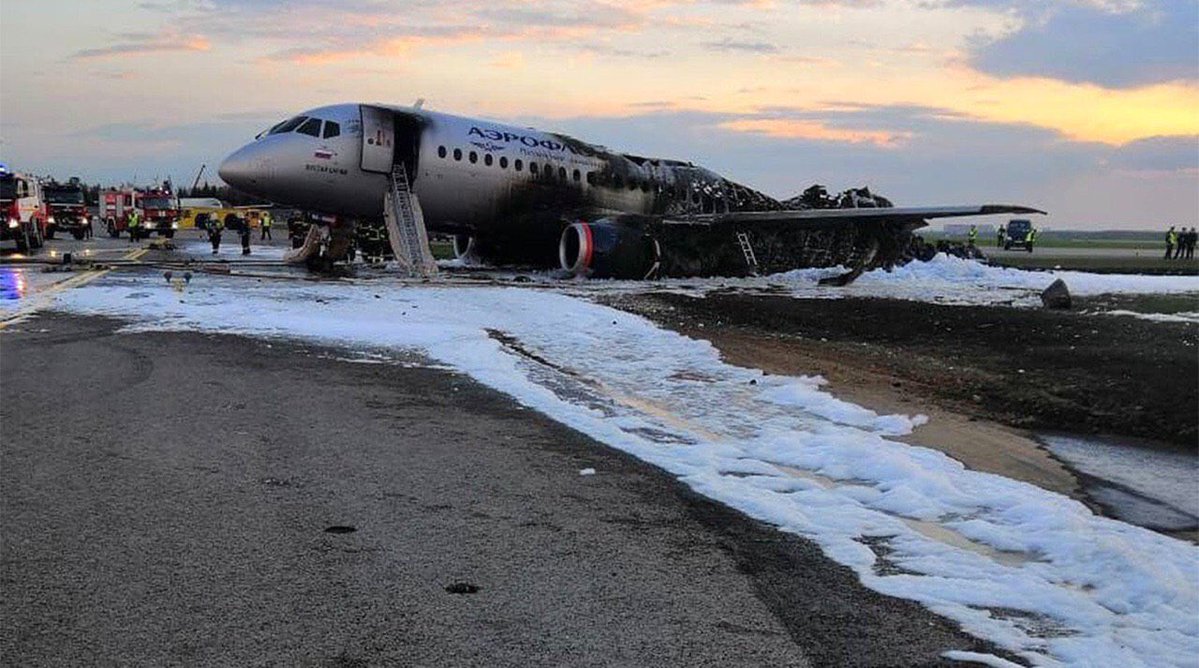
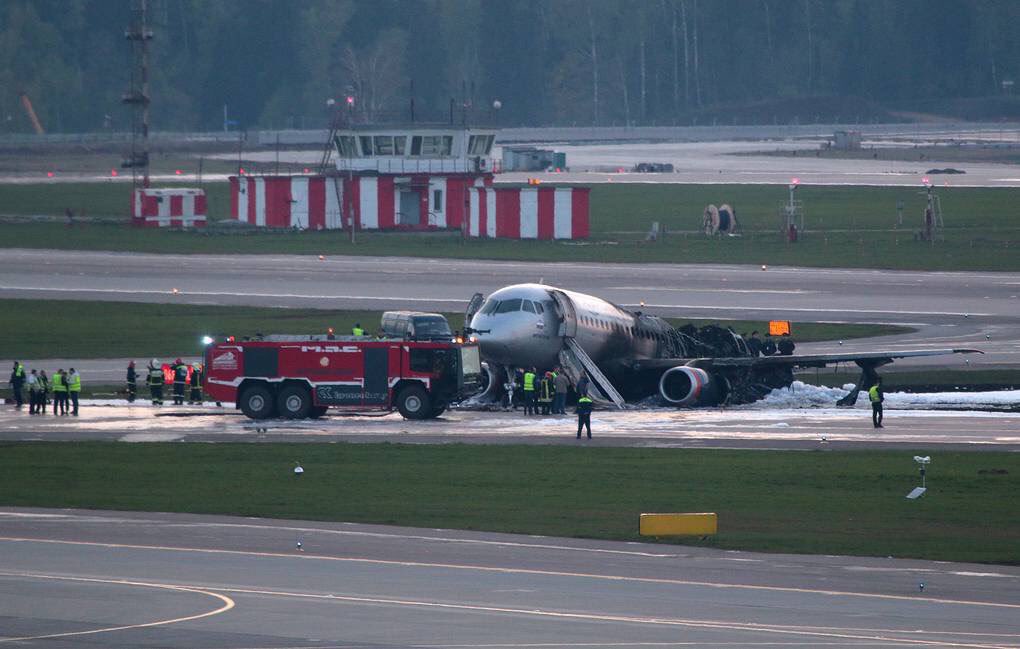
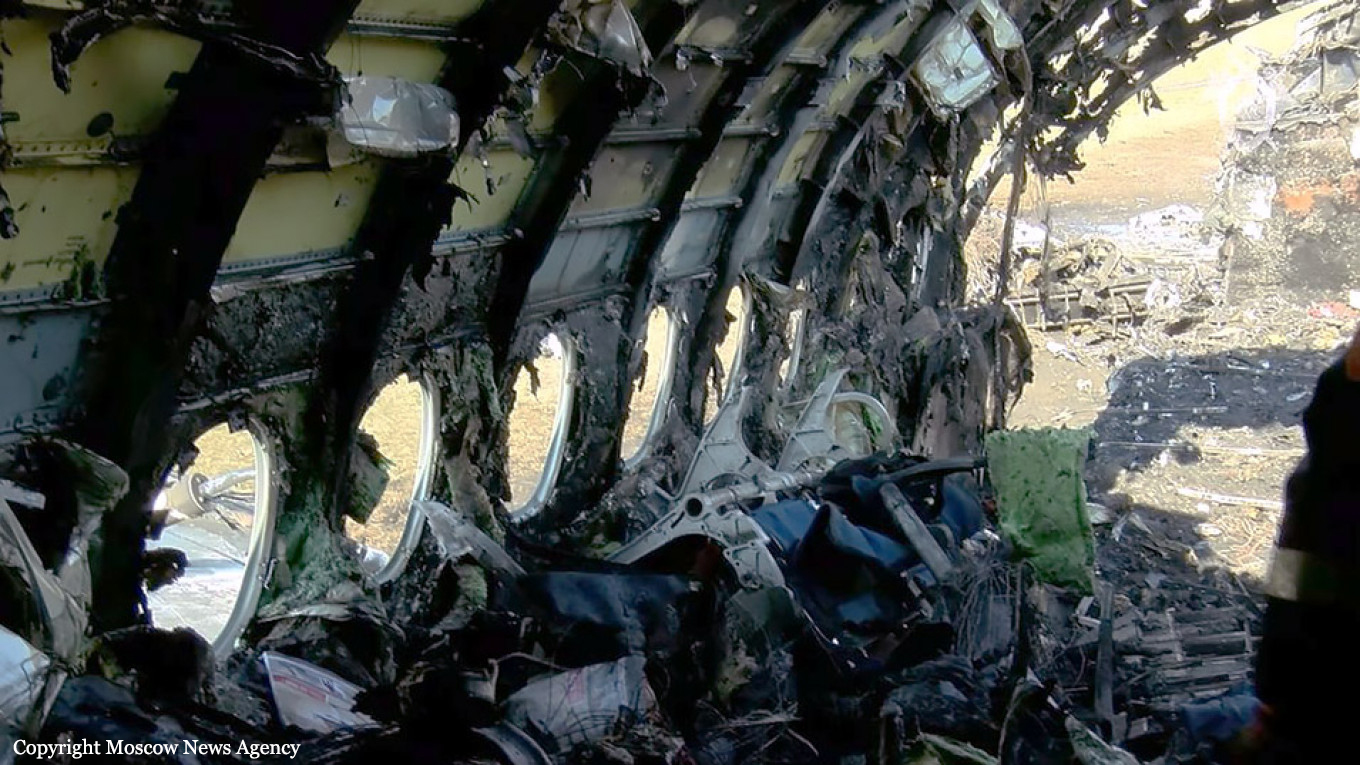
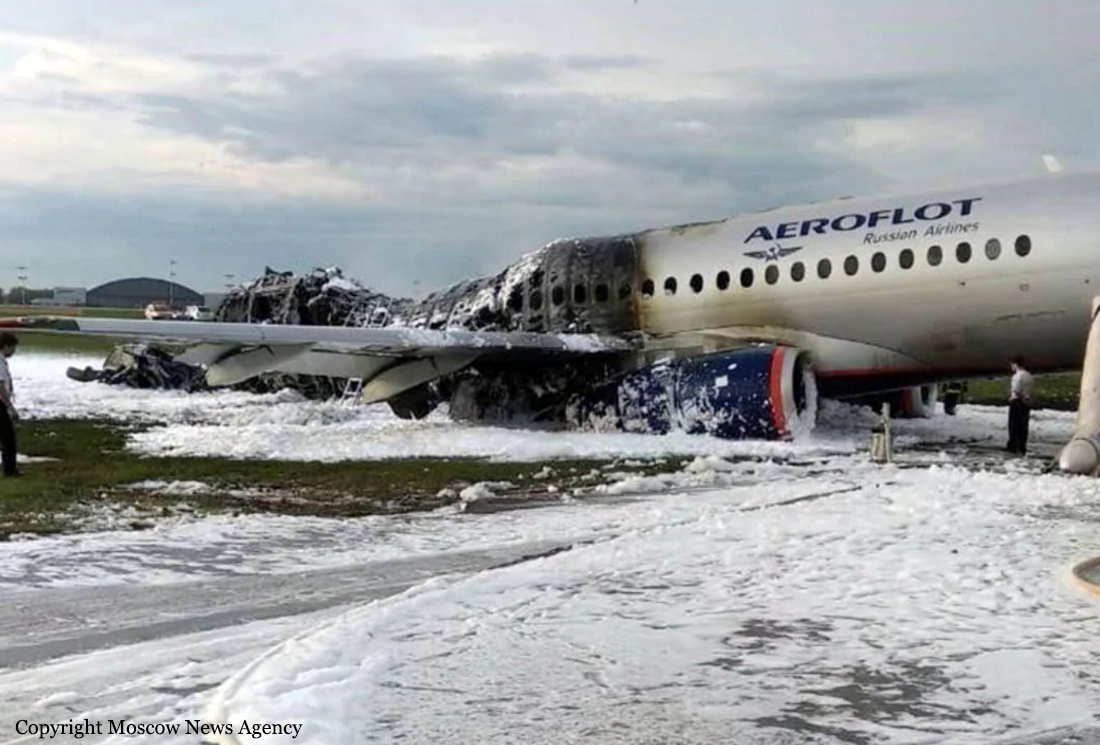
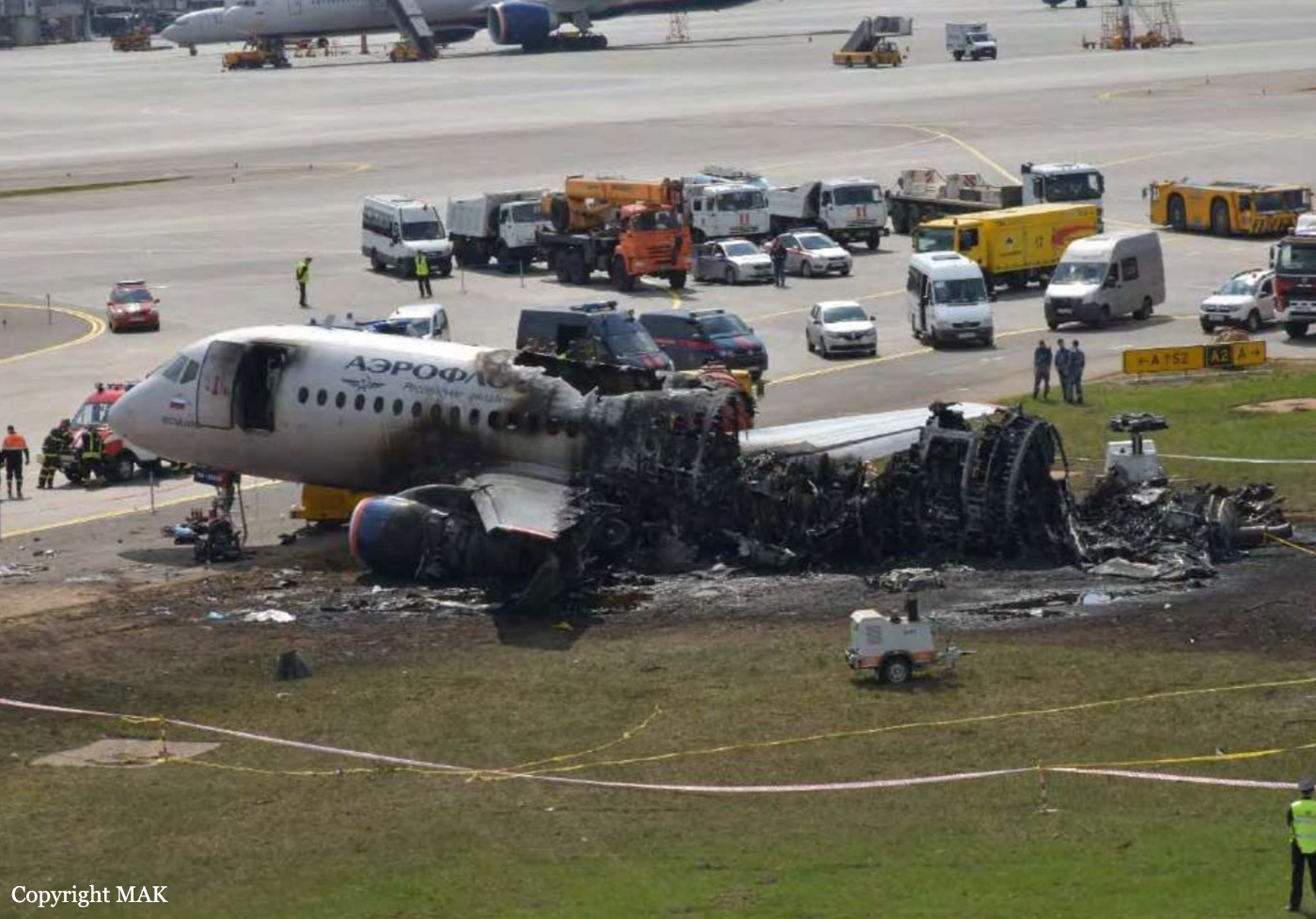
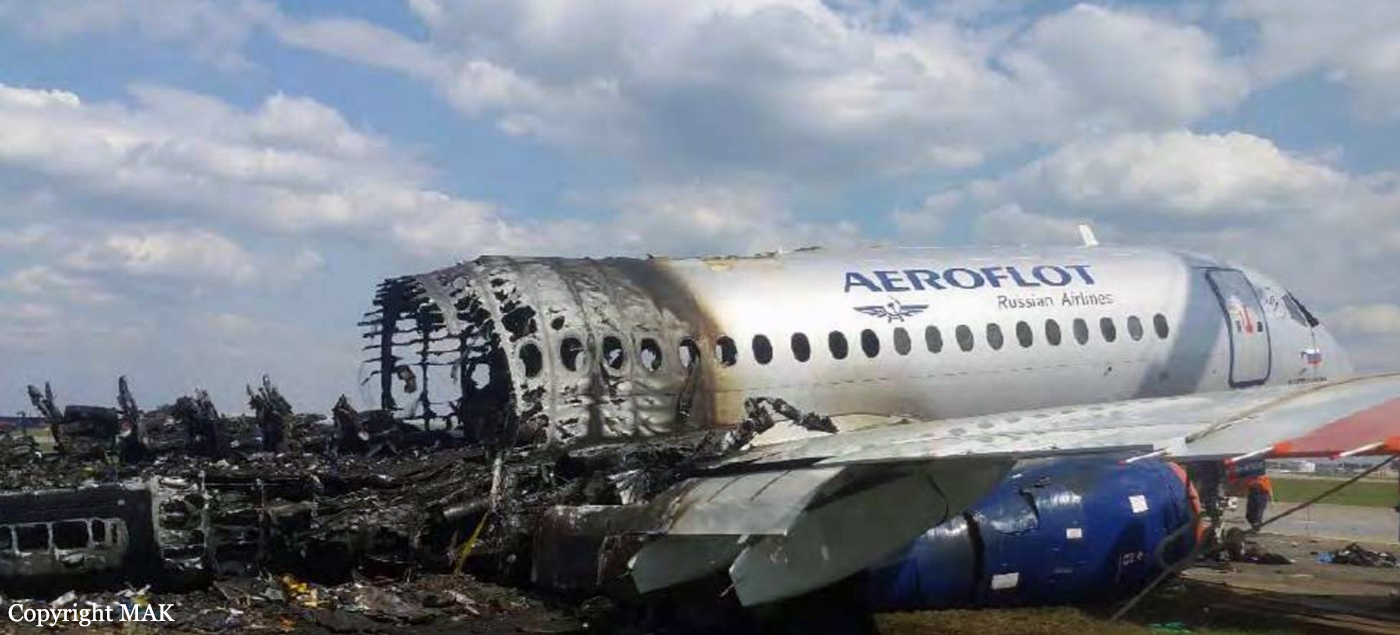
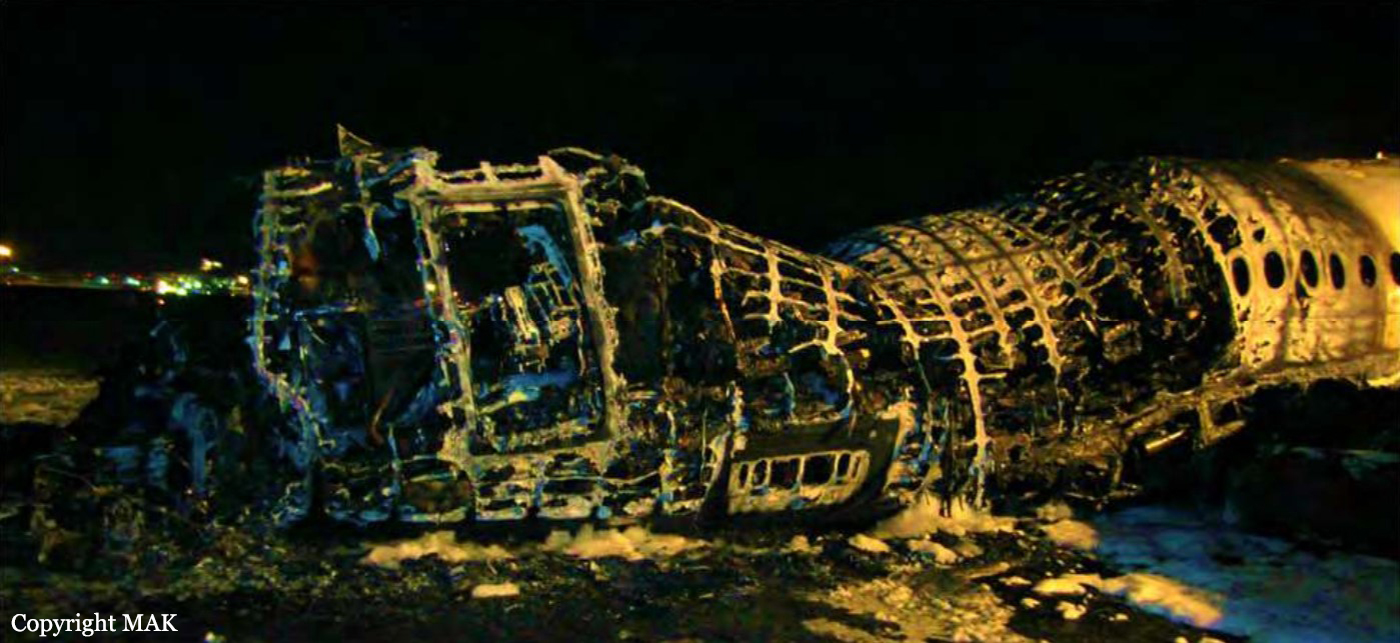
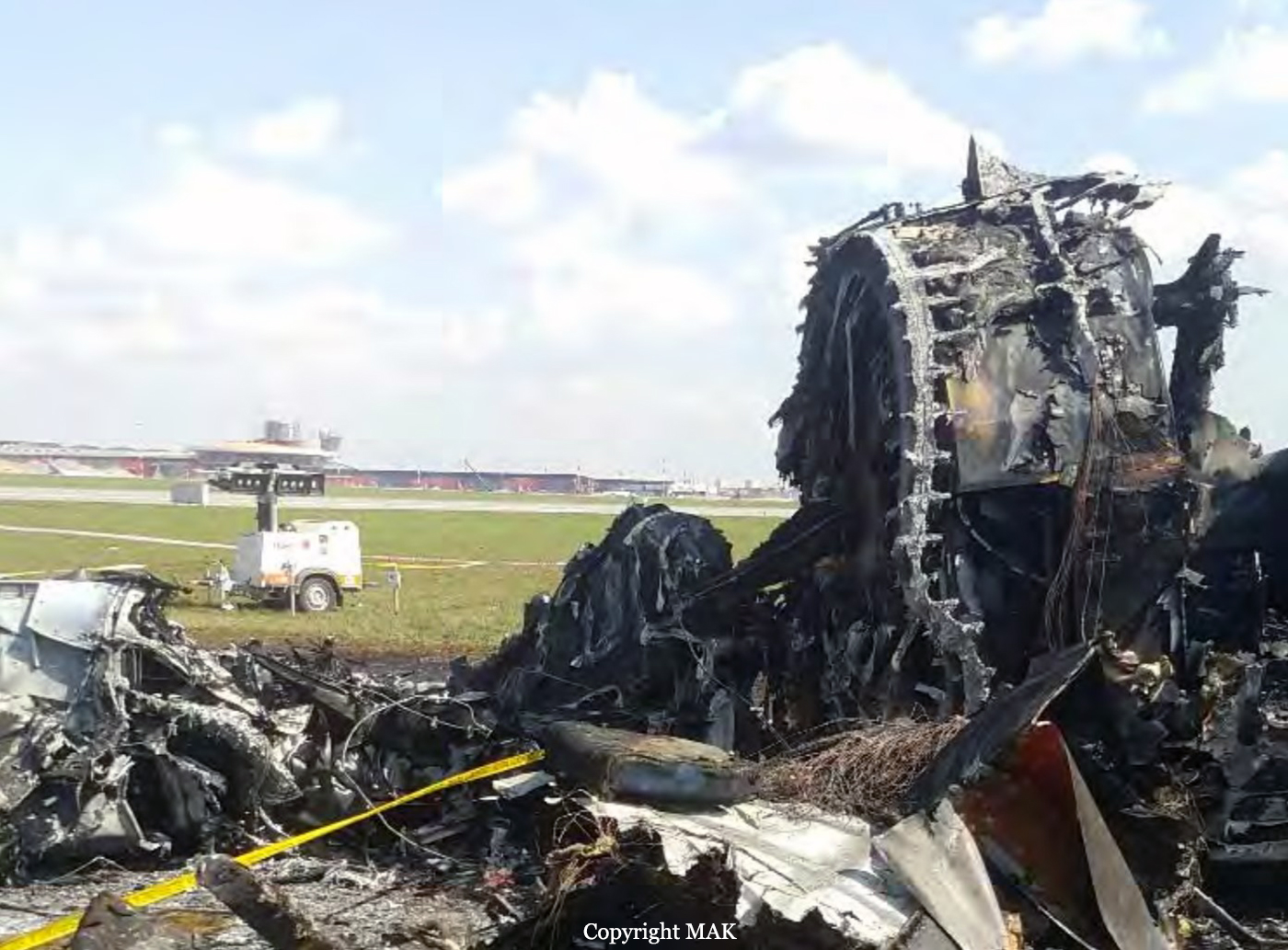
Crash of a Sukhoi Superjet 100-95B in Yakutsk
Date & Time:
Oct 10, 2018 at 0321 LT
Registration:
RA-89011
Survivors:
Yes
Schedule:
Ulan-Ude - Yakutsk
MSN:
95019
YOM:
2012
Flight number:
SYL414
Crew on board:
5
Crew fatalities:
Pax on board:
87
Pax fatalities:
Other fatalities:
Total fatalities:
0
Captain / Total hours on type:
1080.00
Copilot / Total hours on type:
1300
Aircraft flight hours:
8115
Aircraft flight cycles:
3320
Circumstances:
Following an uneventful flight from Ulan-Ude, the crew initiated the approach to Yakutsk-Platon Oyunsky Intl Airport Runway 23L. Due to work in progress, the runway 05R threshold was displaced by 1,150 metres, reducing the landing distance to 2,248 metres for the runway 23L on which the touchdown zone lighting system was unserviceable. On approach, the crew was informed by ATC that the friction coefficient was 0,45. The crew completed the landing on runway 23L with a slight tailwind component of 4 knots and started the braking procedure. Unable to stop within the remaining distance, the aircraft overran, entered the construction area and collided with the junction of a concrete section under reconstruction, causing both main landing gear to collapse (the left main gear was torn off). The aircraft slid for another 250 metres before coming to rest. All 92 occupants evacuated safely and the aircraft was damaged beyond repair.
Probable cause:
The cause of the aviation accident with the RRJ 95B RA-89011 aircraft when landing at night with one deactivated thrust reverser was the transfer to the crew of incorrect information about the value of the friction coefficient, which led to the landing on an icy runway, the average normative friction coefficient which was less than 0.3, which did not allow landing in accordance with current regulations. This led to a significant increase in landing distance, rolling the aircraft out of the runway and collision with the junction of the reconstructed section of the runway with a height of about 0.4 m, which led to the destruction of the main landing gear supports and damage to the engines with fuel leakage without causing a fire.
The contributing factors were the following:
- Absence of a connecting ramp (which was not envisaged by the reconstruction project) between the current and the part of the runway being reconstructed;
- inefficiency of the SMS of Yakutsk Airport JSC in terms of identification and control of risks associated with the possibility of ice formation at the runway, and insufficient control over the implementation of the SMS by aviation authorities;
- erroneous determination of the Xc value at the last measurement;
- inefficiency of ice removal procedure during runway cleaning due to lack of chemical reagents for ice removal and/or thermal machines at the airfield;
- lack of information from the RRJ-95LR-100 RA 89038 aircraft crew about actual rolling out of the runway, which was an aviation incident and was subject to investigation;
- failure by airport and ATC officials to take appropriate action after receiving the RRJ-95LR-100 RA-89038 low friction report from the aircraft crew.
The contributing factors were the following:
- Absence of a connecting ramp (which was not envisaged by the reconstruction project) between the current and the part of the runway being reconstructed;
- inefficiency of the SMS of Yakutsk Airport JSC in terms of identification and control of risks associated with the possibility of ice formation at the runway, and insufficient control over the implementation of the SMS by aviation authorities;
- erroneous determination of the Xc value at the last measurement;
- inefficiency of ice removal procedure during runway cleaning due to lack of chemical reagents for ice removal and/or thermal machines at the airfield;
- lack of information from the RRJ-95LR-100 RA 89038 aircraft crew about actual rolling out of the runway, which was an aviation incident and was subject to investigation;
- failure by airport and ATC officials to take appropriate action after receiving the RRJ-95LR-100 RA-89038 low friction report from the aircraft crew.
Final Report:
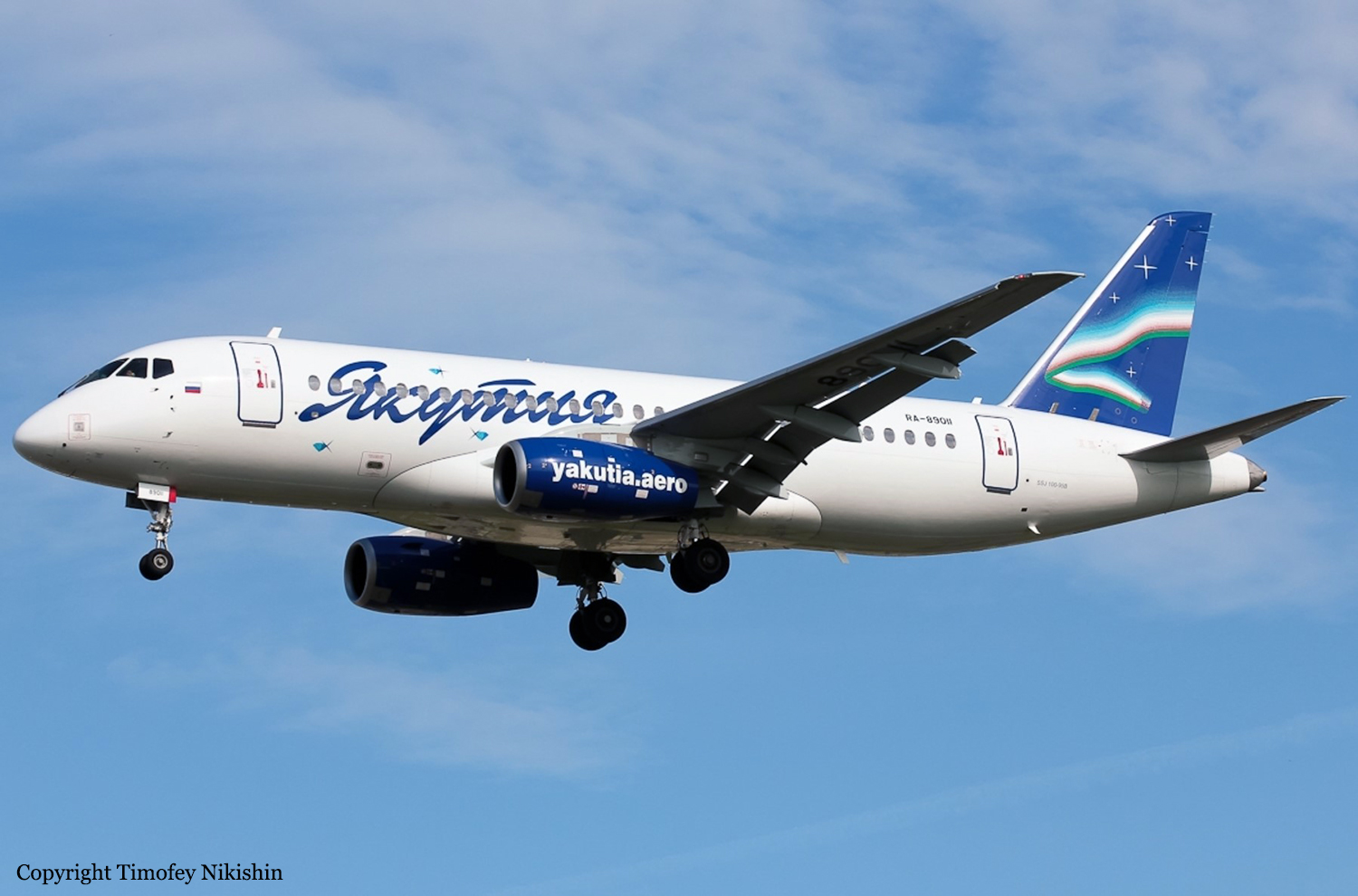
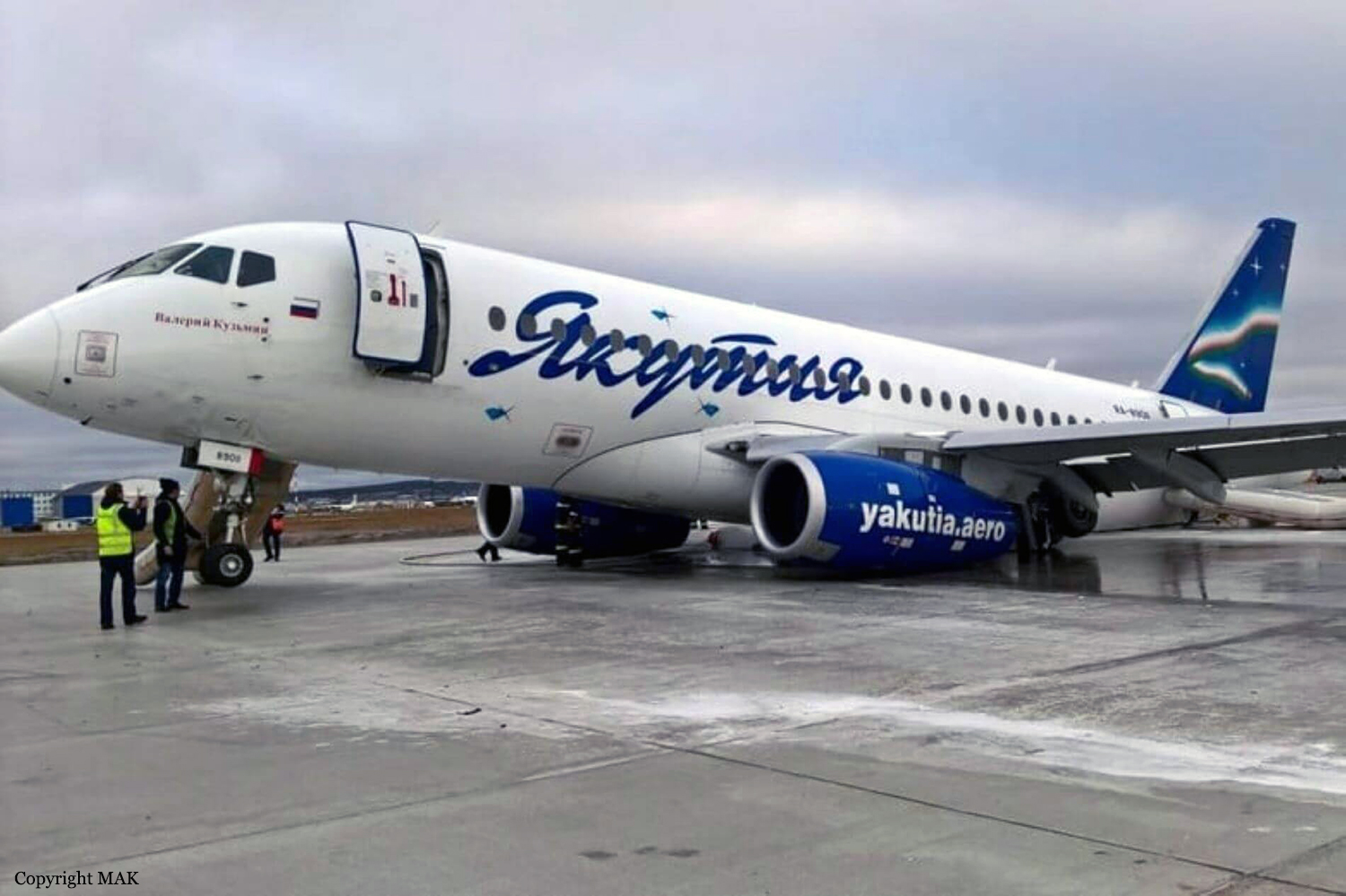
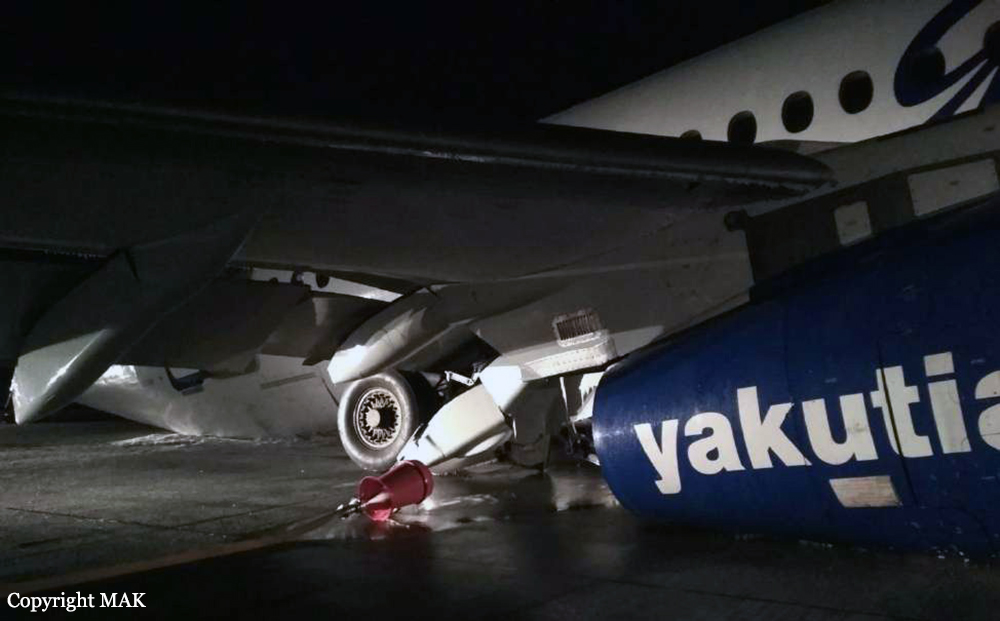
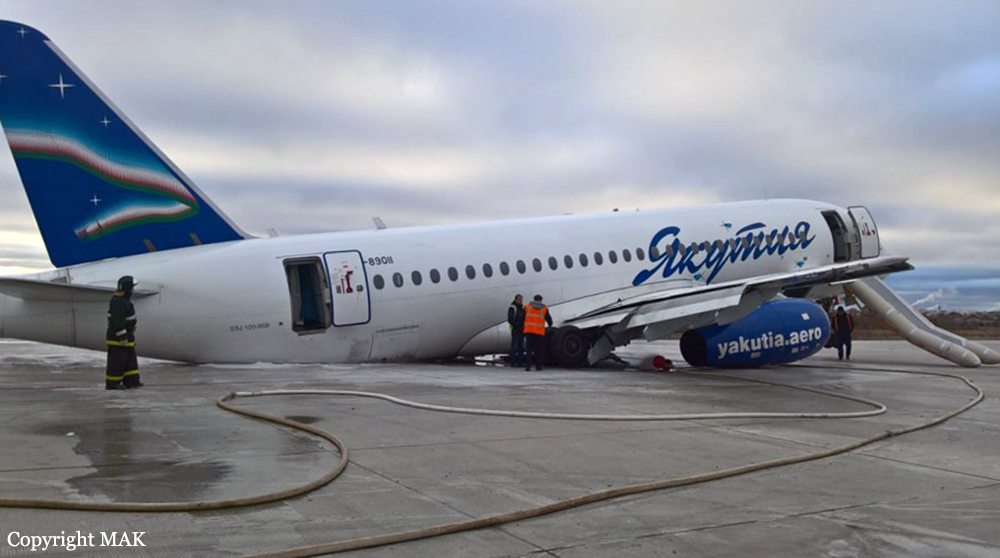
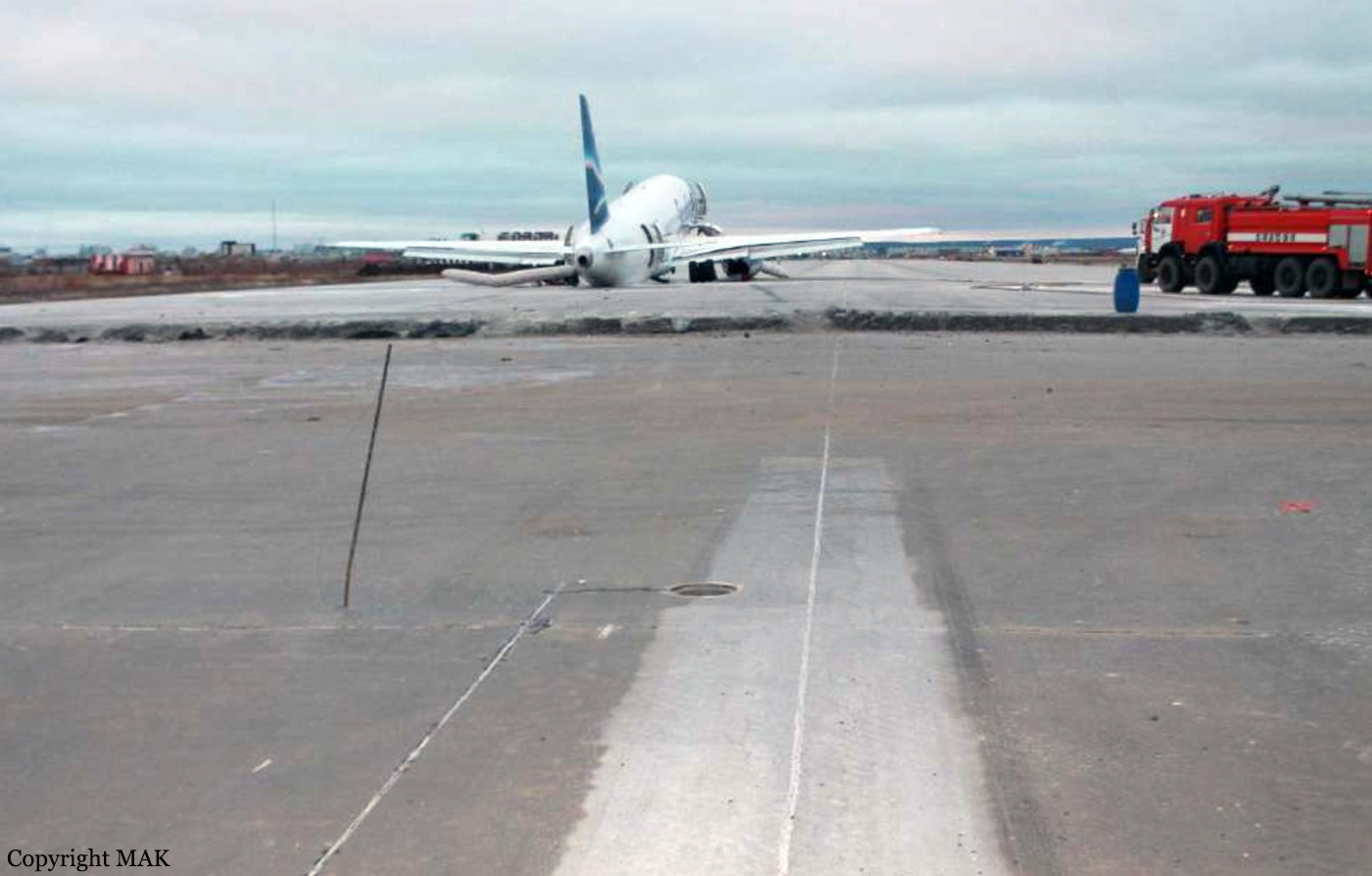
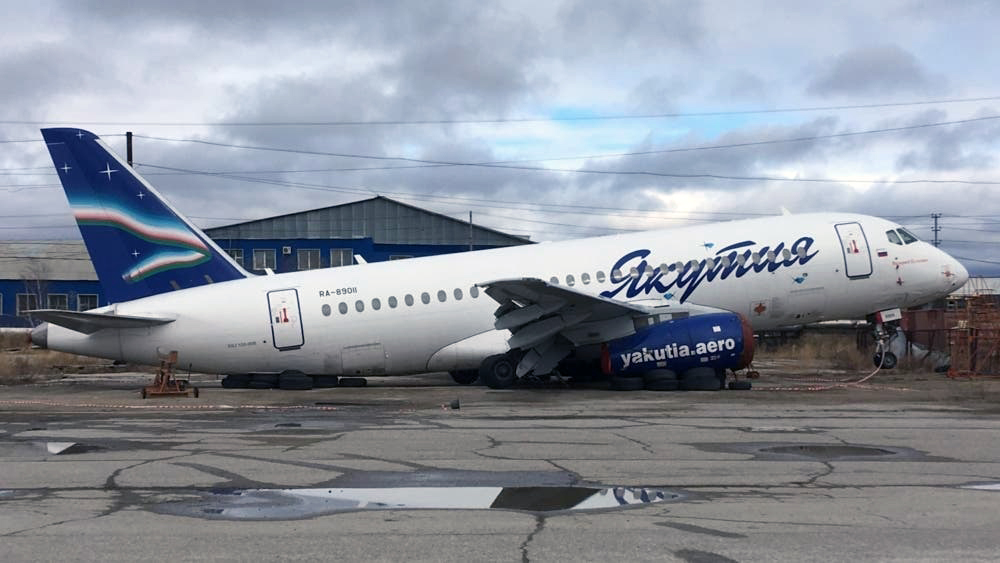
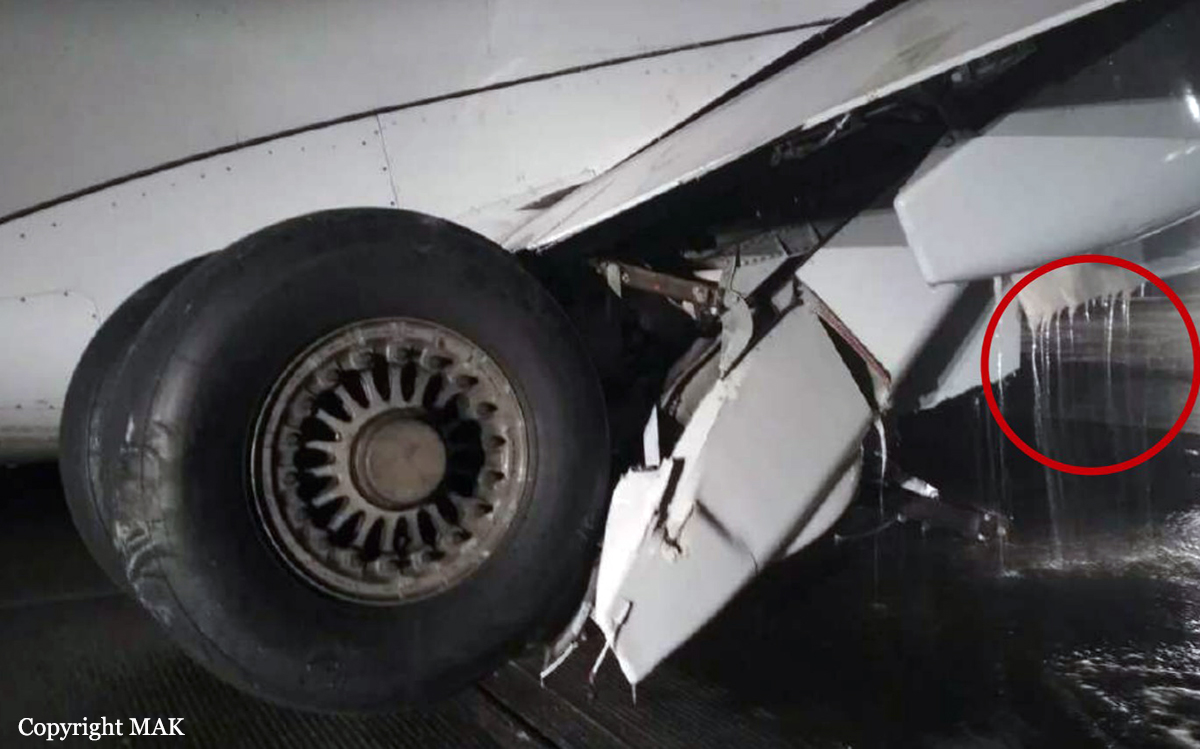
Crash of a Sukhoï Superjet 100-95 on Mt Salak: 45 killed
Date & Time:
May 9, 2012 at 1431 LT
Registration:
97004
Survivors:
No
Schedule:
Jakarta - Jakarta
MSN:
95004
YOM:
2009
Flight number:
RA36801
Crew on board:
4
Crew fatalities:
Pax on board:
41
Pax fatalities:
Other fatalities:
Total fatalities:
45
Captain / Total hours on type:
1348.00
Copilot / Total hours on type:
625
Aircraft flight hours:
843
Aircraft flight cycles:
500
Circumstances:
Aircraft was performing a demo flight and left Jakarta-Halim Perdanakasuma Airport at 1400LT with 41 passengers (potential buyers) on board and a crew of four. About thirty minutes later, while turning around Mount Salak, pilots received the authorization to descend from 10,000 feet to 6,000 feet in low visibility. Aircraft hit the edge of a cliff and crashed few yards further and was totally destroyed by impact and post impact fire. SAR teams arrived on scene 18 hours later and all 45 occupants were killed. At the time of the accident, weather conditions were marginal with clouds shrouding both Mount Salak and Mount Gede. First accident involving a Sukhoi Superjet 100. Present model was manufactured 09AUG2009 and totalized 843 flying hours for 500 cycles. Captain had 10,347 flying hours and was a test pilot by Sukhoi Civil Aircraft Company.
Probable cause:
- The flight crew was not aware of the mountainous area in the vicinity of the flight path due to various factors such as available charts, insufficient briefing and statements of the potential customer that resulted in inappropriate response to the TAWS warning. The impact could have been avoided by appropriate action of the pilot up to 24 seconds after the first TAWS warning.
- The Jakarta Radar service had not established the minimum vectoring altitudes and the Jakarta Radar system was not equipped with functioning MSAW for the particular area around Mount Salak.
- Distraction of the flight crew from prolonged conversation not related to the progress of the flight, resulted in the pilot flying not constantly changing the aircraft heading while in orbit. Consequently, the aircraft unintentionally exited the orbit.
- The Jakarta Radar service had not established the minimum vectoring altitudes and the Jakarta Radar system was not equipped with functioning MSAW for the particular area around Mount Salak.
- Distraction of the flight crew from prolonged conversation not related to the progress of the flight, resulted in the pilot flying not constantly changing the aircraft heading while in orbit. Consequently, the aircraft unintentionally exited the orbit.
Final Report:
